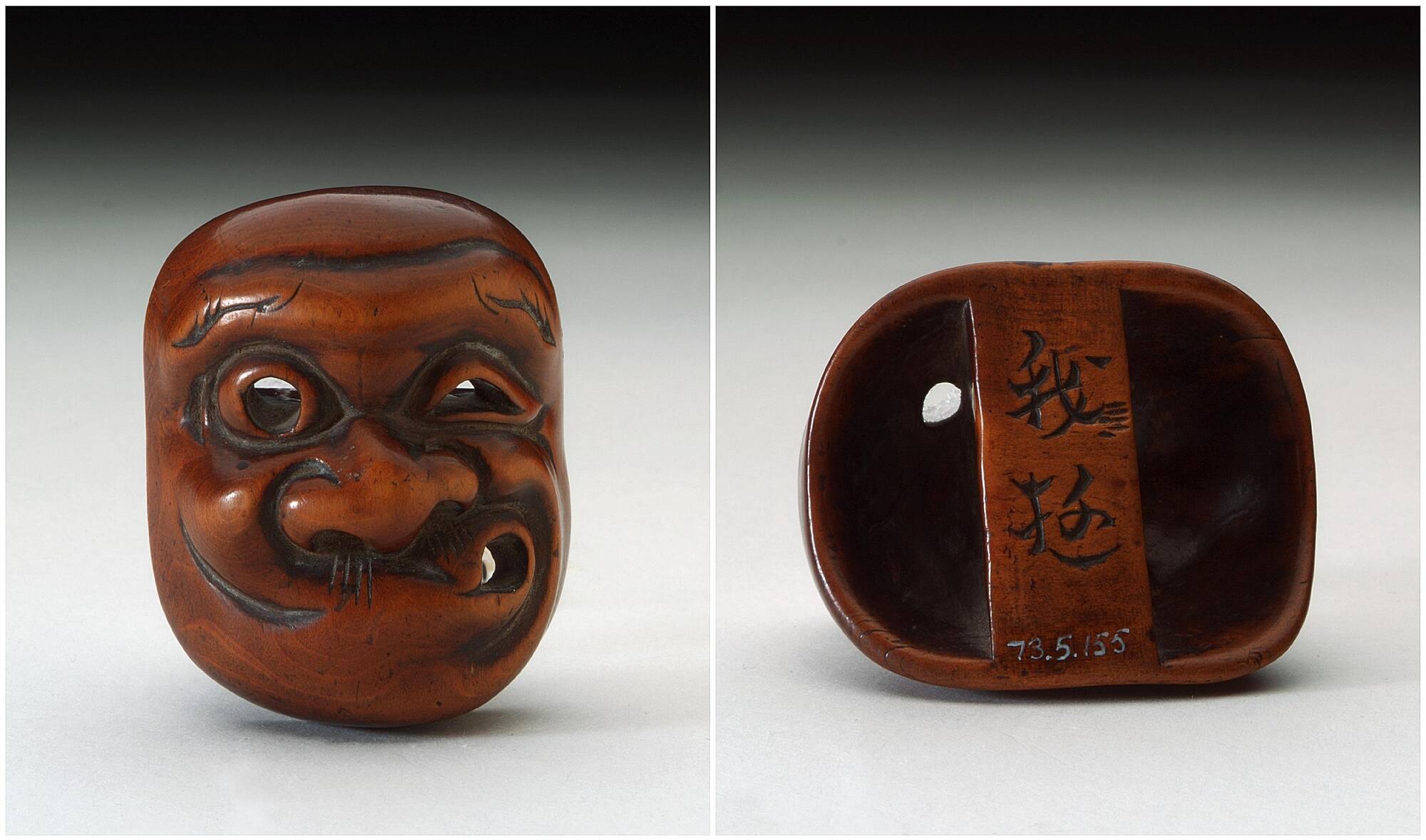
Object Details
Culture
Japan
Date
19th century
Medium
Carved boxwood
Dimensions
1 5/8 x 1 3/8 inches (4.1 x 3.5 cm)
Credit Line
Memorial gift from the Estate of Charles W. Hay, Class of 1925
Object
Number
73.005.155
BRIEF DESCRIPTIONThis is a wooden netsuke carved in the form of a small mask.WHERE WAS IT MADE?This (…)
BRIEF DESCRIPTIONThis is a wooden netsuke carved in the form of a small mask.WHERE WAS IT MADE?This netsuke was made in Japan.HOW WAS IT MADE?Netsuke made from wood, like this one, were hand-carved with knives, chisels and files of different sizes.HOW WAS IT USED?During the Edo period (1603-1868), the standard attire for a well-dressed Japanese man consisted of a kimono tied with a sash. Because kimonos had no pockets, accessory bags and carrying cases (called sagemono: hanging things) were used to hold personal items such as money, medicines, tobacco and seals (a stamp carved with the owner’s name). Silken cords, attached to the sagemono, were threaded through the kimono sash (obi). A toggle, called a netsuke, was attached to the other end of the cord to prevent it from slipping through the sash. To see a netsuke with an inro—one popular type of sagemono that consisted of small, stacked compartments for holding medicines—search for object number 98.087.006 in the keyword search box.The term netsuke comes from the words “ne”, meaning ‘root’ and “tsuke”, meaning ‘to fasten.’ Early netsuke may have been made from found objects such as pieces of roots, nuts, coral and bone. Over time, netsuke production became more and more varied, refined, and innovative, reaching a high point in the early 19th century. Subjects and decoration of netsuke and sagemono reflected the tastes and aspirations of their owners, often infused with an element of comic irony. As clothing traditions modernized, netsuke came to be collected separately from sagemono, and appreciated as sculptural gems in their own right.WHY DOES IT LOOK LIKE THIS?Kyogen was a type of theater and dance performance that was popular among all social classes in Japan during the Edo period (1603-1868). Netsuke carvers made miniature replicas of the character masks that were worn for these performances, and these were often purchased by theater-goers.Notice the comical, contorted features of this face-mask. In Kyogen comic dramas, Hyottoko masks represented uneducated, perplexed farmers or other unrefined characters.












